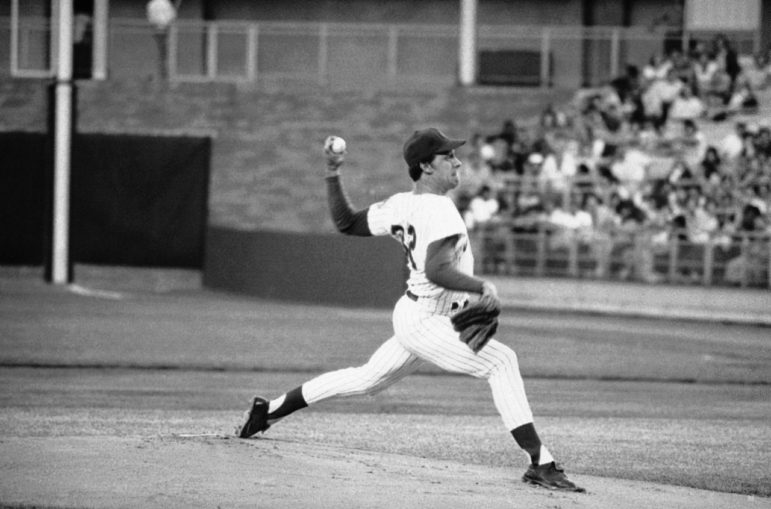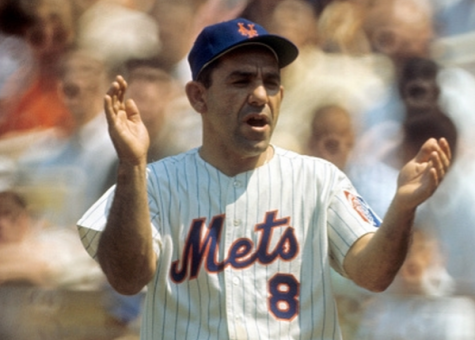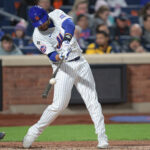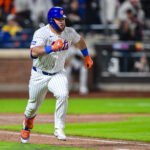
The 1973 season was a gift of sorts for the Mets. The story has been well-chronicled. The Mets were in last place on August 30th (61-71), six and one-half games out of first place in a season in which there was no wildcard.
The Mets seemed dead and buried. Remarkably, they began to rise from the ashes, and by September 21st, they were in first place. They took on the mighty Cincinnati Reds in the NLCS, and managed to prevail by a three games to two margin.
Next up were the defending champion Oakland Athletics in the World Series. Though it seemed as if the Mets were playing with house money at this point, they had a chance to record the organization’s second championship in four years in short series against an Athletics teams that profiled as superior.
The A’s were 10th in batting average in MLB (there were 24 teams in MLB at this time), while the Mets were 23rd in a the category. The differential was more pronounced in team home runs, where the A’s were sixth and the Mets came in at 23rd mark once again. In starting pitching, the Mets had the advantage with a starters’ ERA of 3.02, second in MLB, while the A’s were seventh at 3.47. Oakland’s relievers’ ERA of 2.80 was good for third in MLB, while the Mets’ relievers’ ERA of 4.19 was 18th in the game. Advantage Oakland, right?
The series began with a tight game one, in which Oakland held on for a 2-1 win. Jon Matlack made the start for the Mets, and pitched well, going six innings, allowing two runs, none earned, on three hits. Game two in Oakland went to the Mets in 12 innings by a 10-7 score. Jerry Koosman started and had a short outing of two and one-third innings, letting up three earned runs on six hits.

Here’s where things got a little more interesting. The scene shifted to Shea Stadium for games three, four, and five. Tom Seaver started game three on October 16th, on five days’ rest after last pitching against the Reds in game five on October 10th. Seaver was expectedly very good, throwing eight innings and allowing two earned runs in a game the Mets would lose in 11 innings.
Matlack started game four on three days’ rest and was brilliant, allowing one run on three hits over eight innings. The Mets won the game by a 6-1 score. Koosman was equally brilliant in game five, tossing six and one-third innings of shutout ball in a game the Mets won 2-0. Now, with a three games to two series lead, the Mets were headed to Oakland to try to cap off their magic carpet ride with a stunning world championship.
Yogi Berra had a decision to make. Matlack and Koosman were certainly not options for game six. Seaver was an option on three days’ rest, which he had not done often in his career. The other option was George Stone, who had registered the save in game two with one inning pitched.
Stone was a starting pitcher, who in 1973 was 12-3 with a 2.80 ERA, with 20 of his 27 appearances coming in a starting role. Berra had given Stone the ball to start game four of the NLCS, a game in which the Mets had a chance to win the series. Stone threw six and two-thirds innings in that game, allowing just one run on three hits. Game four of the NLCS took place on October 9th. Game six of the World Series was set to be played on October 20th, so Stone, with just one inning of relief since October 9th, was fully rested.
Berra chose to start Seaver on (short) three days’ rest, which had a second implication. It meant that if there were a game seven, Matlack would also be asked to start on three days’ rest for a second time in the series, something he had not done regularly in his career.
Here’s the point. Berra chose to set up two starters on short rest (both of whom having pitched eight innings in their last starts) with a championship on the line, rather than using Stone in game six, and having Seaver on full rest for game seven, with an also fully-rested Matlack available out of the bullpen.
Seaver pitched well in game six, tossing seven innings and allowing two runs. The Mets were stymied by Catfish Hunter, Darold Knowles, and Rollie Fingers, scoring just one run and losing 3-1. In game seven, Matlack was roughed up early, letting up four earned runs in two and two-thirds innings. The Mets would lose 5-2 and lose the series four games to three.

Was Matlack’s performance a function of pitching on short rest for the second time in a row? It’s impossible to say with any certainty. Matlack had been outstanding in the post season, shutting the Reds out in game two of the NLCS, then pitching well in two World Series starts.
Perhaps the hard-hitting A’s simply got to him, seeing him for the third time. Also, the Mets scored a total of three runs in the last two games, and it’s very hard to win with that type of offensive output.
Berra’s decision in one that haunts many Mets fans to this day. Let’s face it, world championships have not come in abundance to the guys from Flushing.
Being able to write this post represents one of the best aspects of the most fascinating (in my opinion) game in sports. There are so many decisions that are made in every game, and every off-season. There’s so much to talk about in baseball. A decision made 47 years ago will still inspire discussion among fans who were around for the 1973 season.
How many days until pitchers and catchers?
















